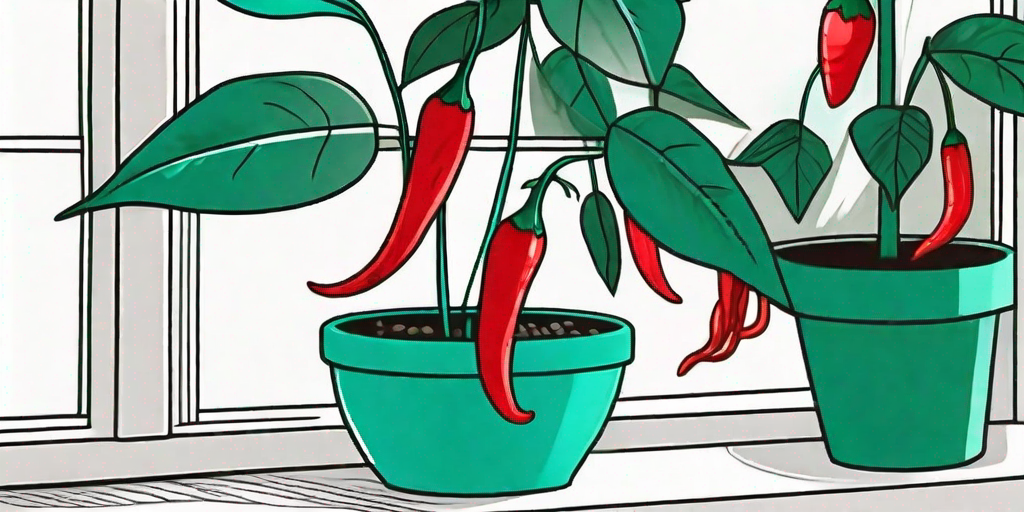
If you're a fan of all things spicy and fiery, then you're in for a treat. Today, we're going to talk about how you can grow and care for your very own cayenne pepper plant. Yes, you heard it right! No more running to the grocery store every time you need a dash of heat for your dishes. You can have your very own spice factory right at home. So, let's not waste any more time and dive right into the world of cayenne peppers.
Understanding Cayenne Peppers
Before we get our hands dirty, let's take a moment to understand what cayenne peppers are. Named after the city of Cayenne in French Guiana, these peppers are a type of Capsicum annuum. They are well-known for their hot and spicy flavor, thanks to a compound called capsaicin. The more capsaicin a pepper has, the hotter it is. And let me tell you, cayenne peppers are not for the faint-hearted!
But don't let their heat scare you away. Cayenne peppers are packed with vitamins and minerals. They're a great source of vitamin A, B6, E, C, and several other nutrients. So, not only do they add a kick to your food, but they also contribute to your health. Now, isn't that a win-win?
Getting Started with Your Cayenne Pepper Plant
Now that we've got the basics down, let's get to the fun part - growing your own cayenne pepper plant. You might think that it's a complicated process, but trust me, it's as easy as pie. All you need is a little patience, a little care, and a lot of love.
First things first, you need to get your hands on some cayenne pepper seeds. You can easily find them in a local nursery or online. Once you have the seeds, it's time to get planting.
Planting the Seeds
Start by filling a pot with a good quality potting mix. Make sure the pot has drainage holes at the bottom to prevent waterlogging. Now, sow the seeds about a quarter of an inch deep into the soil. Cover them lightly with soil and water them gently. Place the pot in a warm, sunny spot and wait for the magic to happen.
It usually takes about 16 to 20 days for the seeds to germinate. During this time, make sure to keep the soil moist but not waterlogged. Too much water can cause the seeds to rot, and we definitely don't want that.
Caring for the Seedlings
Once the seeds have germinated, it's time to take care of the little seedlings. They need plenty of sunlight, so make sure they get at least 6 hours of direct sunlight every day. If you're growing them indoors, you might need to use a grow light.
Water the seedlings regularly, but be careful not to overwater them. The soil should be moist, but not soggy. Also, make sure to feed them with a balanced fertilizer every two weeks to ensure healthy growth.
Harvesting Your Cayenne Peppers
After all the hard work and patience, it's finally time to reap the fruits (or rather, peppers) of your labor. Cayenne peppers usually take about 70 to 80 days to mature. You'll know they're ready to harvest when they turn a bright red color.
Harvesting is easy. Simply cut the peppers off the plant using a sharp knife or scissors. Be sure to wear gloves while doing this, as the capsaicin can irritate your skin. And whatever you do, don't touch your eyes after handling the peppers. Trust me, it's not a pleasant experience.
FAQs about Growing Cayenne Pepper Plants
- Can I grow cayenne pepper plants indoors?
Yes, you can. In fact, cayenne pepper plants do quite well indoors, as long as they get enough sunlight and care.
- How often should I water my cayenne pepper plant?
Water your plant whenever the top inch of the soil feels dry. Be careful not to overwater, as this can cause root rot.
- Can I use regular garden soil to grow my cayenne pepper plant?
It's best to use a good quality potting mix for your cayenne pepper plant. Regular garden soil might not have the right nutrients and drainage properties for the plant.
Conclusion
So there you have it, folks! Growing your own cayenne pepper plant is not only fun and rewarding, but it also adds a dash of spice to your life (literally!). So why not give it a try? Who knows, you might just discover your green thumb in the process.
Remember, the key to a successful cayenne pepper plant is patience, care, and a lot of love. So, get your hands dirty, have fun, and let the spice flow!











